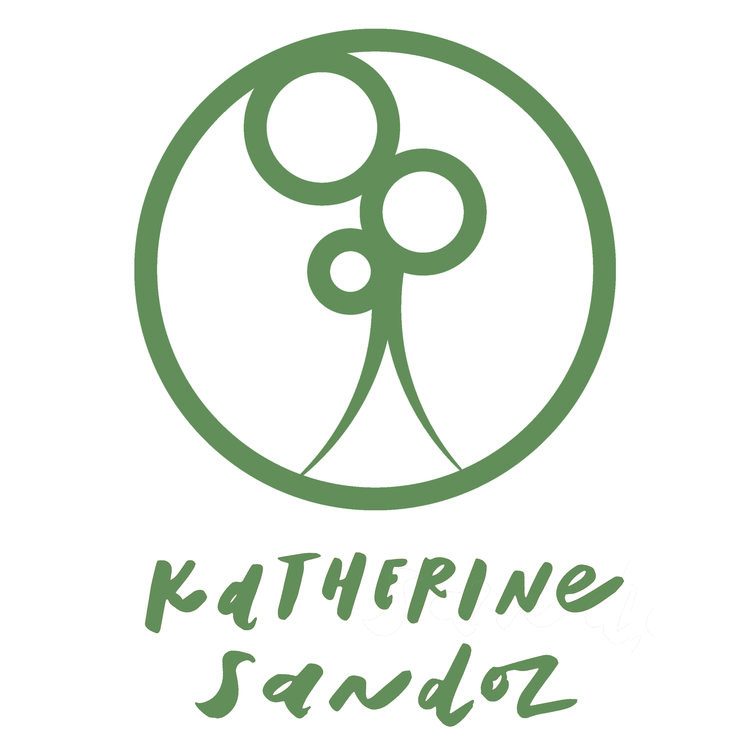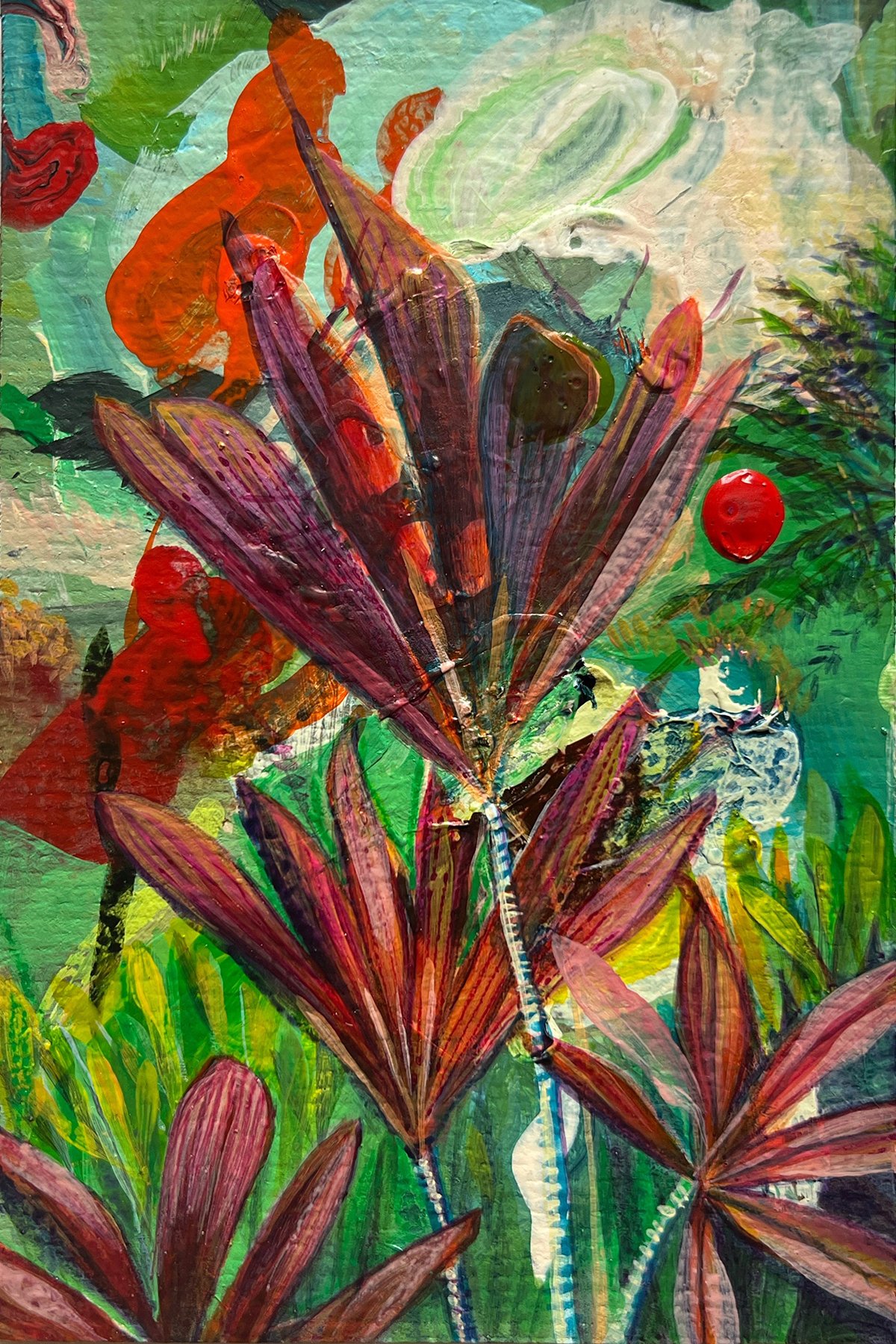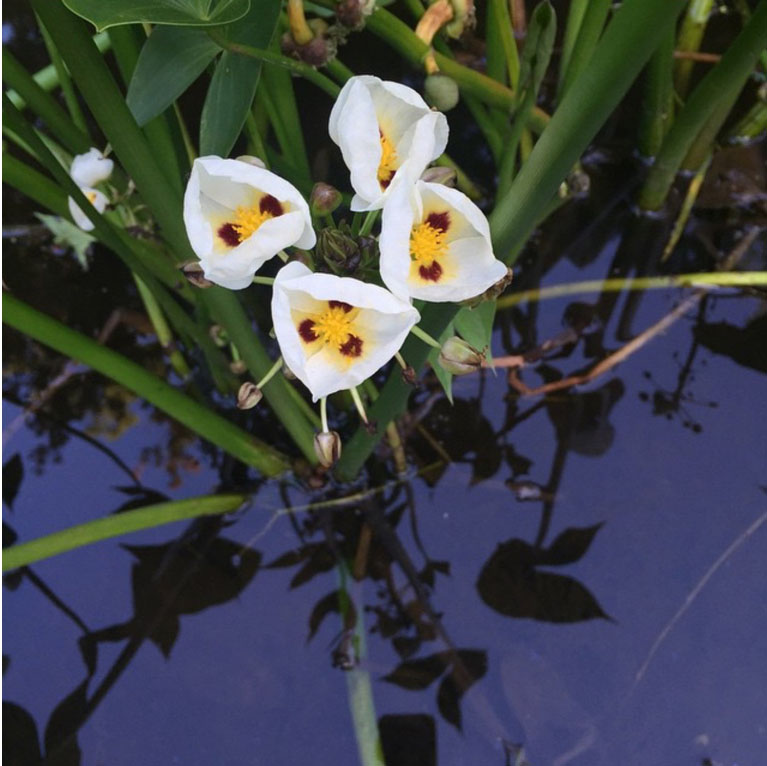At the half-way point of a 16 month study of Hawaii which began with a trip to Maui in January, Katherine Sandoz offers 24 postcard size paintings that feature the landscape and flora of Hawaii. The series name is (pono).
(pono) red ti no. 1, 2022, water-based media on recycled felt paper, 6” x 4”
As with the Hawaiian language - delicate, layered and complex - pono communicates several meanings and, in one word, describes the cosmology and philosophy of the Hawaii oiwi (native Hawaiian of Polynesian descent) ethos. Pono means goodness, righteousness, correctness, excellence, well-being. The word is synonymous with prosperity, benefit, duty, morality and speaks to resources, assets, needs, purposes and plans. When something is pono, it is considered to have the qualities of what is correct and just.
In Mary Kawena Puku and Samuel Hoyt Elbert’s Hawaiian dictionary, it is written, “It is something to authentically aspire to rather than to fully attain, mostly because pono means more than doing the right thing in a given situation, but rather living life with balance, harmony and integrity, seeking to improve the surrounding world.” When something is pono, it is considered to have the qualities of what is correct and just. It partners with nature, its resources, its plants, its people. Without pono, nature, its resources, and the people are endangered physically, intellectually and existentially.
Pono mirrors another essential phrase in the Hawaiian language, thought and culture: aloha ʻāina or ‘love of the land’. One does not simply love the land, humans are borne of, spring up and grow from the land. The land is the first genealogical ancestor of its people. Aloha ʻāina integrates science, society and spirituality in a type of nationalism or patriotism.
The (pono) series celebrates and honors the botanical diversity and complexity of the nation of Hawaii. Each substrate has served as a paint palette and then is interpreted, read and painted upon again. There is a history and a density to the object that is the painting.
In the spirit of pono and aloha ʻāina, each work in the (pono) series is priced at $414 (as a nod to the 14th Amendment). Today we are called to guarantee the 14th; that citizens’ rights and privileges not be abridged by law. To engender both pono and Aloha ʻāina, we must also protect each person’s fundamental rights and liberties.
Spalding Nix Fine Art and Katherine Sandoz will donate 33% of all proceeds of these paintings to the ACLU-GA in support of reproductive health care.










